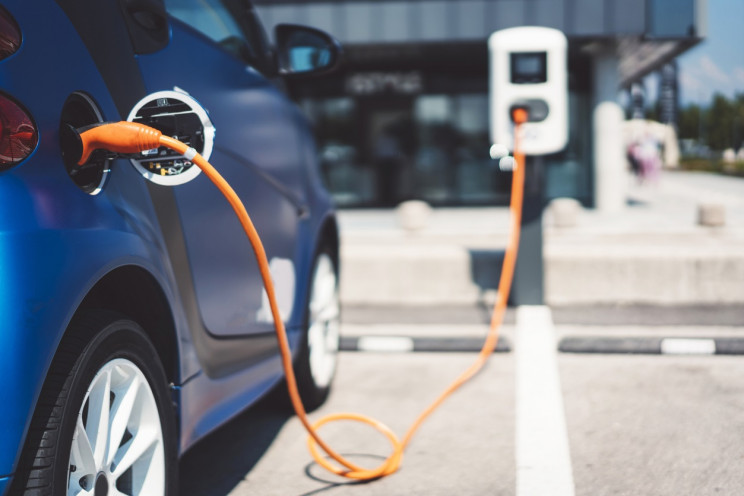Year of the Electric Car
September 4, 2018 •Brad

Every successful technology, product, or service has a tipping point. Many signs indicate that 2017 will be the tipping point for electric cars. Here’s why, and a startup that can make it happen.
Electric car hockey stick starting?
Global electric (“plug in”) vehicle sales showed a 42 percent increase in the first quarter of 2016 compared with the same quarter a year before. More than 180,000 electric cars were sold in the first four months of the year alone.
There is no doubt that environmental concerns are one driving force behind electric car adoption, but technology and perception are two more. Fast, exciting, luxurious, and highly innovative cars such as the ones produced by Tesla drive purchases (no pun intended) on factors other than cost.
Operational costs
Nevertheless, operational costs are a significant factor for most drivers. Unlike gas, the cost of electricity varies dramatically depending on geography and time of day for charging. Many utility providers charge different rates during peak hours, and sometimes nothing during off-peak hours. If you could charge your car between midnight and 6 a.m., you might be driving it effectively for free. A comparison of driving the Nissan Leaf in different states with significantly different electricity rates showed that while charging the car using the national average of 12 cents per kilowatt-hour would cost $3.50 per 100 miles, charging it in Hawaii would cost more than $10 per 100 miles, the equivalent of 20 miles per gallon for a subcompact car. However, if you eliminate the extremes, the cost of operating an electric car is relatively on par with gasoline cars.
Range
Another important factor is the car’s range, and the charging time. When electric cars were first introduced, the range on a full charge was somewhere between 40 and 80 miles. If it takes several hours to charge, trips longer than 80 miles would have not been practical.
During the Paris Auto Show in October 2016, range was all the rage. Volkswagen’s e-Golf promised 124 miles. General Motors’ Ampera-e promised 310 miles (or 238 miles, according to the EPA’s standards), Tesla’s Model S was rated at 315 miles (although with a $135,000 price tag), and the Renault Trezor projected a range of 248 miles.
I live in Dallas. Plano, actually. I drive 12,000 to 15,000 miles a year, or 41 miles a day. I don’t typically drive more than 100 miles a day. I’ve done 200 miles a day, too. Keep in mind that driving 300 miles a day means that you could spend 6 hours in the car. If I drive to Austin, I need a range of slightly more than 200 miles. If I drove to Houston, I would need over 300 miles. Gasoline cars typically have a range of 400 miles per tank. But they only take five minutes to fill, while an electric car takes hours to charge. So as long as I don’t have to charge while on a trip, the range currently achieved by electric cars is sufficient.
Charging alternatives?
In 2008, the Israeli entrepreneur Shai Agassi left his job at SAP to start Better Place, a startup with a dream of opening “electric gas stations” that would charge batteries in five minutes. In fact, instead of charging the battery, the station would replace your discharged battery with a fully charged one in minutes. However, Agassi learned the same lesson that companies such as Metricom (creator of Ricochet, the first wireless email service) and others have learned: Building an infrastructure that has to offer complete coverage before the service has any value is a recipe for failure. Better Place filed for bankruptcy in early 2013, after only 21 operational battery-swap stations were built.
I believe that a long-enough range could be the tipping point for electric cars. Battery technology is constantly improving, with prices going down as the market is growing. More efficient motors could also help increase the range.
A startup’s more efficient motor
A few years ago, I visited a few entrepreneurs at the Fort Worth incubator Tech Fort Worth. One of them was Fred Hunstable, founder of Linear Labs, located at his ranch in the little town of Granbury, Texas. As he began describing a different way to look at an electric motor and rotating magnetic fields, I started realizing he might be up to something big. Fred has 14 patents filed for his technology. Recently he shared graphs with me, comparing the performance of his motor with that of the motor of one of the most common electric cars in production. His numbers were impressive. But he focused on the parameters that electric car manufacturers care about (kw/kg, kw/volume, and $/kw); it was hard to get him to share some “consumer-grade” data. The driving profile of a car varies, between highway driving and city driving, different sizes and weights of cars, different accelerations, etc. “There simply is no easy way, even using the EPA or EUR standards, to say this one’s better than the other,” said Hunstable. However, reluctantly, he shared the results of some of the modeling done in cooperation with the University of Texas at Dallas. Those showed that his new motor could provide 30 percent more highway range, and 100 percent more city range, compared with existing electric car motor technologies.
The Hunstable name may sound familiar in the startup and technology arena. Fred’s son Brad sold his startup, Ustream, to IBM for $130 million, and is now helping his father at Linear Labs.
Ripe for tipping point in 2017?
With longer range, more efficient motors, and additional features (such as self-driving cars) and design, I believe that 2017 will be the tipping point for electric cars. Not very many homes will have only electric cars, but I do expect to see at least one electric car in every home. My wife might get one. I’m sticking with my Jeep …

